Black Decker VP3500 Bruksanvisning
Black Decker
Borrmaskin
VP3500
Läs gratis den bruksanvisning för Black Decker VP3500 (5 sidor) i kategorin Borrmaskin. Guiden har ansetts hjälpsam av 4 personer och har ett genomsnittsbetyg på 4.4 stjärnor baserat på 2.5 recensioner. Har du en fråga om Black Decker VP3500 eller vill du ställa frågor till andra användare av produkten? Ställ en fråga
Sida 1/5

GENERAL SAFETY RULES - FOR ALL BATTERY OPERATED TOOLS
WARNING! READ AND UNDERSTAND ALL INSTRUCTIONS. Failure to follow all
instructions listed below, may result in electric shock, fire and/or serious personal injury
SAVE THESE INSTRUCTIONS
WORK AREA
• Keep your work area clean and well lit. Cluttered benches and dark areas invite accidents.
• Do not operate power tools in explosive atmospheres, such as in the presence of
flammable liquids, gases, or dust. Power tools create sparks which may ignite the dust or
fumes.
• Keep bystanders, children, and visitors away while operating a power tool.
Distractions can cause you to lose control.
ELECTRICAL SAFETY
• Do not abuse the cord. Never use the cord to carry the tool. Keep cord away from
heat, oil, sharp edges or moving parts. Replace damaged cords immediately.
Damaged cords may create a fire.
• A battery operated tool with integral batteries or a separate battery pack must be
recharged only with the specified charger for the battery. A charger that may be suitable
for one type of battery may create a risk of fire when used with another battery.
• Use battery operated tool only with specifically designated battery pack. Use of any
other batteries may create a risk of fire.
PERSONAL SAFETY
• Stay alert, watch what you are doing and use common sense when operating a power
tool. Do not use tool while tired or under the influence of drugs, alcohol, or
medication. A moment of inattention while operating power tools may result in serious
personal injury,
• Dress properly. Do not wear loose clothing or jewelry. Contain long hair. Keep your
hair, clothing , and gloves away from moving parts. Loose clothes, jewelry, or long hair
can be caught in moving parts.
• Avoid accidental starting. Be sure switch is in the locked or off position before
inserting battery pack. Carrying tools with your finger on the switch or inserting the battery
pack into a tool with the switch on invites accidents.
• Remove adjusting keys or wrenches before turning the tool on. Awrench or a key that is
left attached to a rotating part of the tool may result in personal injury.
• Do not overreach. Keep proper footing and balance at all times. Proper footing and
balance enable better control of the tool in unexpected situations.
• Use safety equipment. Always wear eye protection. Dust mask, non-skid safety shoes,
hard hat, or hearing protection must be used for appropriate conditions.
TOOL USE AND CARE
• Use clamps or other practical way to secure and support the workpiece to a stable
platform. Holding the work by hand or against your body is unstable and may lead to loss of
control.
• Do not force tool. Use the correct tool for your application. The correct tool will do the
job better and safer at the rate for which it is designed.
• Do not use tool if switch does not turn it on or off. Atool that cannot be controlled with the
switch is dangerous and must be repaired.
• Disconnect battery pack from tool or place the switch in the locked or off position
before making any adjustments, changing accessories, or storing the tool. Such
preventative safety measures reduce the risk of starting the tool accidentally.
• Store idle tools out of reach of children and other untrained persons. Tools are
dangerous in the hands of untrained users.
• When battery pack is not in use, keep it away from other metal objects like: paper
clips, coins, keys, nails, screws or other small metal objects that can make a
connection from one terminal to another. Shorting the battery terminals together may
cause sparks, burns, or a fire.
• Maintain tools with care. Keep cutting tools sharp and clean. Properly maintained tools,
with sharp cutting edge are less likely to bind and are easier to control.
• Check for misalignment or binding of moving parts, breakage of parts, and any other
condition that may affect the tool’s operation. If damaged, have the tool serviced
before using. Many accidents are caused by poorly maintained tools.
• Use only accessories that are recommended by the manufacturer for your model.
Accessories that may be suitable for one tool may create a risk of injury when used on
another tool.
SERVICE
• Tool service must be performed only by qualified repair personnel. Service or
maintenance performed by unqualified personnel may result in a risk of injury.
• When servicing a tool, use only identical replacement parts. Follow instructions in the
Maintenance section of this manual. Use of unauthorized parts or failure to follow
Maintenance Instructions may create a risk of shock or injury.
SPECIFIC SAFETY RULES
• Hold tool by insulated gripping surfaces when performing an operation where the
cutting tool may contact hidden wiring or its own cord. Contact with a "live" wire will also
make exposed metal parts of the tool "live" and shock the operator.
WARNING: Some dust created by power sanding, sawing, grinding, drilling, and other
construction activities contains chemicals known to cause cancer, birth defects or other
reproductive harm. Some examples of these chemicals are:
• lead from lead-based paints,
• crystalline silica from bricks and cement and other masonry products, and
• arsenic and chromium from chemically-treated lumber. (CCA)
Your risk from these exposures varies, depending on how often you do this type of work. To
reduce your exposure to these chemicals: work in a well ventilated area, and work with
approved safety equipment, such as those dust masks that are specially designed to filter
out microscopic particles.
The label on your tool may include the following symbols.
V ..........................volts A..........................amperes
Hz ........................hertz W ........................watts
min........................minutes ......................alternating current
......................direct current
n
o........................no load speed
..........................
Class II Construction
........................earthing terminal
........................safety alert symbol .../min ..................revolutions or
reciprocations
per minute
Important Safety Instructions (For Battery and Charger)
• Do not store or carry battery so that metal objects can contact exposed metal end shown
below. For example, do not place battery in aprons, pockets, tool boxes, drawers etc. with
loose nails, screws, keys, etc. without battery cap. Battery could short circuit causing fire or
burns or damage to battery.
• Battery caps are provided for use when carrying batteries or while battery is stored in a
pocket, tool box, etc. Remove cap before placing battery in charger or tool.
• Never attempt to open the battery for any reason. If the housing of the battery breaks or
cracks, immediately discontinue use and do not recharge.
• Do not incinerate the batteries. They can explode in a fire. A small leakage of liquid from the
battery cells may occur under extreme usage, charging or temperature conditions. This does
not indicate a failure. However, if the outer seal is broken and this leakage gets on your skin:
a.Wash quickly with soap and water.
b.Neutralize with a mild acid such as lemon juice or vinegar.
c.If the battery liquid gets in your eyes, flush them with clean water for a minimum of 10
minutes and seek immediate medical attention.
MEDICAL NOTE: The liquid is a 25-35% solution of potassium hydroxide.
• Charge batteries only with VersaPak battery charger.
• Do not use charger in wet or damp conditions. It is intended for indoor use only. Do not use
near sinks, tubs, or the like. Do not immerse in water.
• Do not use charger for any uses other than charging VersaPak batteries. Other batteries
may explode.
• Do not operate charger with damaged cord or plug — have them replaced immediately.
• Do not operate charger if it has received a sharp blow, been dropped, or otherwise damaged
in any way; take it to a qualified Black & Decker service center.
• Do not disassemble charger; take it to a qualified Black & Decker service center when
service or repair is required. Incorrect reassembly may result in risk of electric shock or fire.
There are no consumer serviceable parts inside.
• For best results, do not charge batteries when they or air temperature is BELOW +40°F or
ABOVE +105°F.
• The charger is designed to operate on standard household electrical power. Do not attempt
to use it on any other voltage. Be sure your power supply agrees with the nameplate
marking.
• Unplug charger when not in use.
• Do not abuse charger cord. To reduce the risk of damage to electric plug and cord, never
carry charger by cord or yank it to disconnect from receptacle. Keep charger cord from heat,
oil, and sharp edges.
• Use only charger supplied by the manufacturer to recharge.
Important Charging Notes
• While charging, the charger transformer may hum and batteries and charger become warm.
This is a normal condition and does not indicate a problem.
• If a battery does not charge properly— (1) Check current at receptacle by plugging in a lamp
or other appliance. (2) Check to see if receptacle is connected to a light switch which turns
power off when you turn out the lights. (3) Move charger and batteries to a surrounding air
temperature of +40°F to +105°F. (4) If the receptacle and temperature are OK, and you do
not get proper charging, take or send the batteries and charger to your local Black & Decker
service center. See “Tools Electric” in yellow pages.
• The batteries should be recharged when they fail to produce sufficient power on jobs which
were easily done previously. DO NOT CONTINUE to use the tool with its batteries in a
depleted condition.
• Before using battery charger, read all instructions and cautionary markings on battery
charger, battery and product using battery.
CAUTION: To reduce the risk of injury, charge only VersaPak
TM
rechargeable batteries.
Other types of batteries may burst causing personal injury and damage.
Charging Procedure
Insert the metal end of the VersaPak battery into the charger. The indicator light will glow
indicating that charging is taking place and will remain on as long as the battery is in the
charger. Continuous charging is not a safety concern.
BATTERY CAP
METAL END
INSTRUCTION
MANUAL
VV
VV
EE
EE
RR
RR
SS
SS
AA
AA
PP
PP
AA
AA
KK
KK
CC
CC
OO
OO
MM
MM
BB
BB
OO
OO
PP
PP
AA
AA
KK
KK
--
--
VV
VV
PP
PP
33
33
55
55
00
00
00
00
VEA EL ESPAÑOL EN LA CONTRAPORTADA.
SAVE THIS MANUAL FOR FUTURE REFERENCE.
INSTRUCTIVO DE OPERACIÓN, CENTROS DE SERVICIO Y PÓLIZA DE
GARANTÍA. ADVERTENCIA: LÉASE ESTE INSTRUCTIVO ANTES DE USAR
EL PRODUCTO.
VP720
DB700
KEY INFORMATION YOU SHOULD KNOW:
• Charge battery for 6 hours before first use.
• Charger may hum; batteries or charger may become warm while charging.
Catalog # VP3500 Form # 605181-00 Copyright © 2001 Black & Decker Printed in U.S.A.
Produktspecifikationer
| Varumärke: | Black Decker |
| Kategori: | Borrmaskin |
| Modell: | VP3500 |
Behöver du hjälp?
Om du behöver hjälp med Black Decker VP3500 ställ en fråga nedan och andra användare kommer att svara dig
Borrmaskin Black Decker Manualer
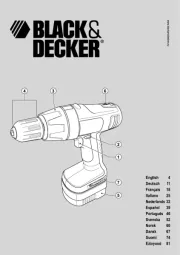
5 September 2025
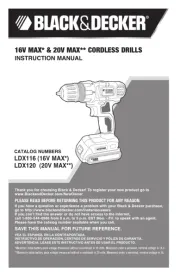
4 September 2025

4 September 2025
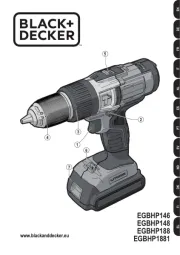
4 September 2025
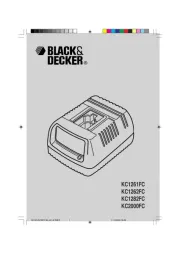
4 September 2025

3 September 2025
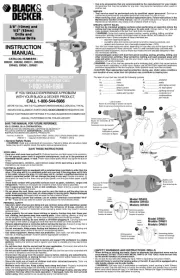
3 September 2025

3 September 2025

3 September 2025
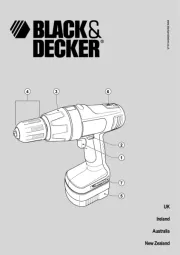
3 September 2025
Borrmaskin Manualer
- Ozito
- Luxor
- King Craft
- Panasonic
- Festool
- Zipper
- Verto
- Bavaria
- Black And Decker
- Powerplus
- Texas
- Profitech
- Draper
- Ryobi
- Toolson
Nyaste Borrmaskin Manualer

15 Oktober 2025

15 Oktober 2025

14 Oktober 2025

13 Oktober 2025
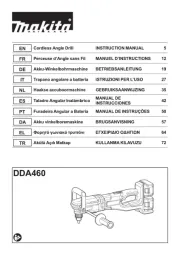
13 Oktober 2025
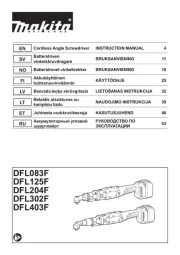
13 Oktober 2025

13 Oktober 2025
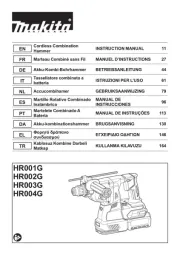
12 Oktober 2025

12 Oktober 2025
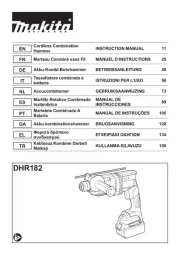
12 Oktober 2025